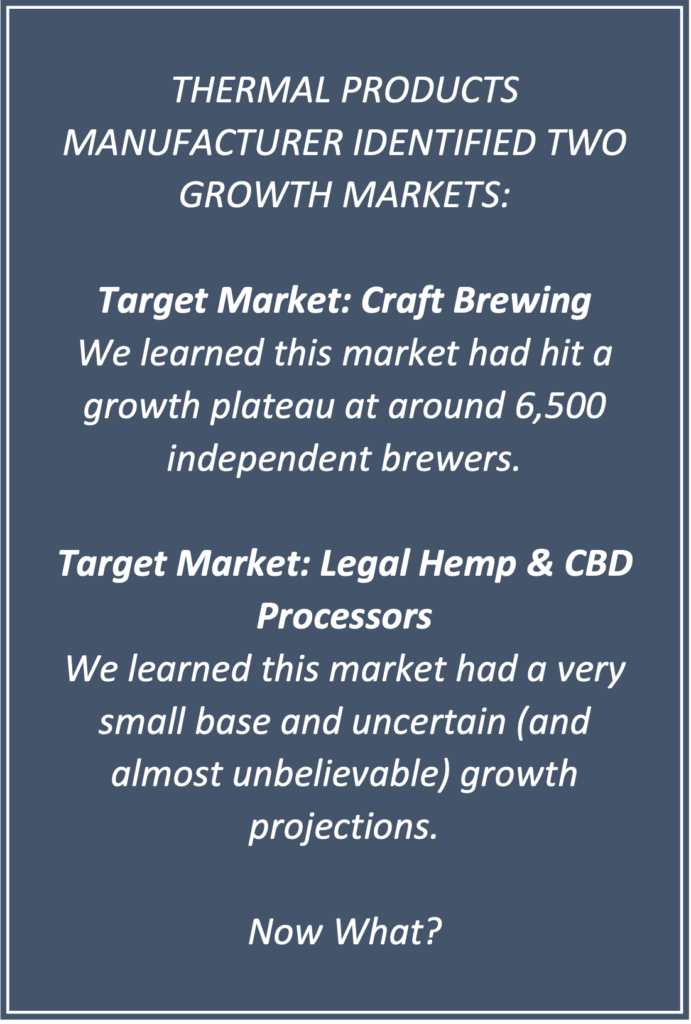By Mark Coronna, Founder & CMO, The Practical CMO
INTRODUCTION
No one knows whether U.S. manufacturers will face a major recession, or a more moderate economic slowdown, in the next two years. The Federal Reserve cannot confidently project our economic performance over this period. ITR Economics, a private blue-chip company which makes its livelihood off economic forecasts, has projected an economic slowdown for 2023 for several years. In our current conditions, with inflation a continuing factor and with increased political uncertainty domestically and internationally, everyone—forecasters and CEOs alike–faces new forecasting challenges.
At a minimum, it’s a fair assumption that after years of strong economic growth, a cyclical correction or worse is in our future. Is your business ready? I remember what I learned years ago as a young corporate executive—anyone can succeed with economic tailwinds, it’s what you do when you are facing headwinds that matters most. We know the economy will change, but in the memorable words of John C. Maxwell: “Change is inevitable, growth is optional.”
AN ECONOMIC SLOWDOWN IS AN OPPORTUNITY TO IMPROVE YOUR PLANNING
Individual businesses approach future planning differently. The healthiest approaches start with planning for future economic, social, cultural, technological, and competitive scenarios and then work backwards to determine what they would have to do to be successful in whatever scenario plays out. This is called “scenario planning” and is the direct opposite approach to assuming your current plan will enable your success regardless of how the economy performs.
The scenario-driven approach can be both sobering and challenging. At the highest level, scenario planning is an “outside in” approach which generates several (usually 2-3) potential future scenarios. Your job is to understand what capabilities your business will need to be successful in ALL of the scenarios you have identified. You can’t just pick and prepare for one. Scenario planning requires you prepare your business for which scenario emerges down the road. When you understand all of the factors which will enable your success, the need for new growth markets is likely to emerge. But what defines a good growth market?
There are two major questions you must be able to answer to define a “good” growth market: The first question is the easier of the two:
Is the market you selected a healthy market? These conditions are usually present in a healthy market:
- Consistent historical growth over the past five years and a high confidence forecast for future growth over the upcoming five years.
- An industry structure which allows new entrants with new value propositions to participate.
- An industry facing challenges (financial, regulatory, new technologies, replacement products or services, etc.).
- A competitive landscape which is dominated by a few mega firms. Often, large established firms are slow to recognize and react to new opportunities to bring value—that’s your opening.
- A fragmented market comprised of many smaller competitors, giving you the ability to differentiate your offering from existing options.
Insights on the markets you are interested in is usually assisted by secondary research. These market profiles can give you the big picture you need.
Here’s a mini-case study from Enerquip Thermal Solutions, Medford, Wisconsin.

Enerquip is a manufacturer of sanitary and industrial heating and cooling solutions headquartered in north central Wisconsin. The business was looking for consistent 10-12% annual growth—which they had achieved in prior years but were now struggling to achieve. The executive team knew that 10-12% growth gave them some economic cushion and also helped them avoid constant staff fluctuations.
This business had an interest in two new markets: craft brewing and legal hemp/CBD processing.
After researching these two markets, we learned that each would have challenges as a new growth market. Craft brewing had plateaued at around 6,500 brewers, and more significantly, the majority of the market had a need for one or two products only. The legal hemp and CBD processing market had incredible forecasted growth rates (anywhere from $2B to $20B a year) but such a small base that we thought it might take years to develop a new revenue base.
This felt a little like the “three bears” story—but with only two bears!
We went back and researched what other industries might be good growth markets. That led us to Renewable Fuels, which was experiencing explosive growth from fracking and natural gas capture initiatives.
What did we do next? We answered the second and more important question:
What makes a good growth market for MY business?
These are the questions you need to answer:
- Can we find enough “ideal customers” in the markets we are considering?
- Can we develop an effective marketing and sales plan to cost-effectively acquire a sufficient base of new customers?
- Can we close and profitably develop enough customers to achieve the customer lifetime values we need?
- Can we differentiate ourselves against established competitors?
- Can we launch into the market and meet our investment and financial return goals?
The way to answer the second question starts by having an Ideal Customer Profile (ICP). An ICP identifies all the attributes you would like to see in a new customer and helps evaluate prospects analytically. This means not using the traditional task or activity-based qualification models, but scoring prospects against those factors which you know make for a great customer.
Here’s a link to a podcast on implementing an Ideal Customer Profile if you want to know more.
My buddy, Todd Eberhardt, calls ideal customers “Grand Slam Customers” for the value they bring your business.
It’s not rocket science, but current marketing technology in the form of databases, marketing automation applications, and CRM systems to identify, track, and score prospects. It’s a different way of avoiding the poorly performing sales funnel approach. The approach I recommend is called the Intelligent Sales Pipeline, and if you access this free eBook, you’ll learn why it’s so much better in building your revenue pipeline: https://thepracticalcmo.com/improving-your-lead-gen-and-qualification-processes/
SUMMARY
You might ask how Enerquip performed after taking a more insightful approach to both selecting, and then developing, markets. The markets they selected, Legal Hemp/CBD and Renewable Fuels, contributed strongly to revenue, and almost immediately. In the first year of doing business with hemp processors, Enerquip generated $1M in incremental sales from that market alone. The renewable fuels market, over the first three years of focus, contributed even more. And to add to that success, earlier this year, Enerquip earned a nomination for “Wisconsin Manufacturer of the Year” in the WIMOTY Under 100 Employee category.
Adding an Ideal Customer Profile and more intelligent approach to their prospecting and lead qualification processes helped set the business on track for several record revenue years.
You, too, can improve your Marketing and your revenue and profits! When the market slows, you’ll be much better off by being proactive.
For more information, please contact George Bureau, Vice President Consulting Services.
